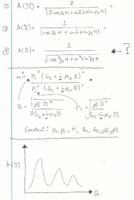Hi,
I'm trying to graph a function that contains imaginary numbers. I may have made a mistake in calculating the modulus of the denominator (step 2 to step 3), or it may be right. Either way, I'm not sure how to get rid of the imaginary numbers, or if they can't be rid of, how to graph the function. I'm trying to use Excel, which I
understand isn't the best program but it's what I've got to work with. Any help would be appreciated. Thanks!

I'm trying to graph a function that contains imaginary numbers. I may have made a mistake in calculating the modulus of the denominator (step 2 to step 3), or it may be right. Either way, I'm not sure how to get rid of the imaginary numbers, or if they can't be rid of, how to graph the function. I'm trying to use Excel, which I
understand isn't the best program but it's what I've got to work with. Any help would be appreciated. Thanks!

